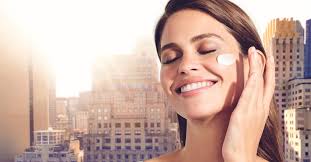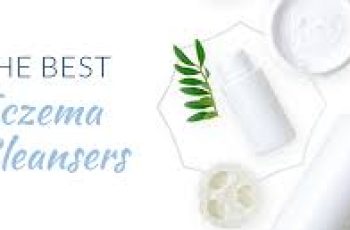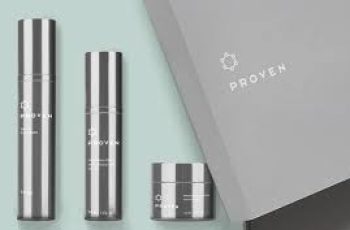
The Best Skincare Ingredients and Products to Protect Against Environmental Damage
Whether you’re indoors or outdoors, your skin is exposed to environmental factors.
From UV rays to blue light to pollution, “all of these environmental factors can cause oxidative damage to the skin, which can degrade collagen and compromise the skin’s barrier function.
A compromised barrier makes the skin more susceptible to the negative effects of UV rays,” says Dr. Jennifer Chwalek, a dermatologist at Unionderm in New York City.
Oxidative damage, or stress, occurs when the number of damaging free radicals exceeds the number of neutralizing antioxidants, according to research.
Here, dermatologists discuss the top environmental factors that damage the skin and contribute to skin aging and increase your risk of skin cancer, as well as the best products and ingredients to protect the dermis from damage.
UV rays are the biggest threat to your skin
First: the sun.
“UV radiation is the most important environmental factor and one of the most common contributors to skin damage and skin aging,” says Dr. Marissa Garshick, a dermatologist at the Institute of Medical Dermatology and Cosmetic Surgery in New York City.
According to the World Health Organization (WHO), UV rays trigger the production of free radicals in the skin, which can lead to DNA damage and the breakdown of collagen and elastin in the skin, causing wrinkles.
They also stimulate melanin production, which causes skin discoloration, Garshik says. Melanin is the pigment that gives skin its color, according to the study.
Aside from aesthetics, there’s also an increased risk of skin cancer.
The cumulative effect of long-term sun exposure can lead to the development of non-melanoma skin cancers, including basal cell carcinoma (BCC) and squamous cell carcinoma (SCC).
The World Health Organization says early childhood exposure to UV radiation may be a major factor in melanoma skin cancer, which can be fatal.
Sunlight isn’t the only thing that harms your skin
Experts are increasingly skeptical about blue light, or visible light, as a potential contributor to skin aging. “Blue light is in the visible spectrum.
It’s the long-wavelength light that comes from our computer screens and phones,” Garshik says.
While research is still in its infancy and studies are generally small, some believe that even long hours in front of a screen can cause premature skin aging.
For example, one study found that visible light promotes the formation of free radicals in the skin.
One research review suggests that the flash from smartphones is also part of this free-radical-producing light. (The headline even questioned whether taking selfies could cause premature skin aging.)
Air pollution accelerates skin aging
Air pollution affects more than just breathing. As the Environmental Protection Agency (EPA) warns, it can cause the same free radical damage to the skin as light.
“Air pollution, including particulate matter, nitrogen dioxide, hydrocarbons, and ozone, can cause oxidative damage to the skin, which can increase inflammation,” Dr. Chwalek says.
Data from one study backs up his view.
Take particulate matter (PM), for example. According to the EPA, PM is a mixture of small particles and droplets, such as organic chemicals and soil or dust.
One study found that PM promotes inflammation in the skin and impairs collagen synthesis.
Over time, this can lead to sagging skin and the appearance of fine lines and wrinkles.
“Air pollution creates free radicals in the skin that prematurely break down collagen and elastin,” says Dr. Rebecca Kazin, a board-certified dermatologist at ICON Dermatology and Aesthetics in North Bethesda, Maryland.
If you’re also struggling with dark spots on your face, cars could be to blame.
Garshick points to one article that also suggests that exposure to air particles from traffic is associated with pigmented spots on the cheeks.
8 Steps to Protect Your Skin from the Environment
1. Try a Mineral Sunscreen to Prevent Sun Damage
Using sunscreen is the ultimate goal, but many dermatologists, like Chwalek, prefer those with titanium dioxide or zinc oxide because they physically block UV rays.
“Chemical sunscreens absorb some light, so I think physical sunscreens are superior. They provide slightly more protection against UV rays,” she says.
You can find them in sunscreens labeled “mineral.”
2. Choose a tinted sunscreen—one that does double duty
For even better blue light blocking, look for a tinted moisturizer with SPF, Garshick advises. The iron oxide in tinted sunscreens protects the skin from this spectrum of light.
(It provides the tint.) She prefers EltaMD UV Daily Tinted Broad-Spectrum SPF 40 or SkinCeuticals Physical Fusion UV Defense SPF 50.
3. Choose a functional sunscreen powder for effective sun protection on the go.
Visible light can worsen existing pigmentation issues, Garshick says. You should have one that you can reapply indoors.
Pressed powders with built-in SPF are a good option because you can layer them over existing makeup. They’re especially helpful if you work in an office and need to touch up your makeup during lunch. Try Colorescience Sunforgettable Total Protection Brush-On Shield SPF 50.
4. Eat more red algae to protect against blue light
If you’re not a fan of tinted primers, Garshick says you can also look for blue-light-blocking products that contain red algae. She likes Supergoop! Invisible Sunscreen.
5. Take vitamin C and E in the morning
“Antioxidants neutralize free radicals that break down collagen and elastin prematurely,” Garshick says.
Studies show that vitamin C works best in combination with vitamin E, so some formulas include both, she says. One that dermatologists often recommend: SkinCeuticals C E Ferulic.
Use this serum in the morning to give your skin the defense it needs all day.
6. Rely on antioxidants like glutathione and resveratrol
Antioxidants are also useful at night, Garshick says, because they can help repair damage done during the day.
Look for resveratrol in SkinCeuticals Resveratrol B E (studies show it’s a powerful antioxidant found in red wine that scavenges free radicals).
Garshick also recommends Good Science Beauty Brightening Cream, because it’s rich in glutathione, another powerful antioxidant that one study showed helped fight dark spots and even skin tone.
You can also get antioxidants through dietary supplements, like Heliocare, which credits its sunscreen benefits to scientifically-proven Polypodium leucotomos extract.
But it’s important to note that oral supplements should never replace sunscreen.
7. Wash thoroughly before bed
“It’s important to remove daily dirt and buildup, so gentle cleansing is part of any good anti-aging routine,” Garshick says.
A gentle cleanser like Dove Deep Moisturizing Body Wash will cleanse the skin while maintaining the skin barrier and reducing the risk of irritation.
8. Protect at night
Use products that remove dirt and debris from the surface of the skin, Garshick advises.
She likes Good Science Beauty Purifying Cream, which contains the plant-derived antimicrobial peptide oligopeptide-10 to fight toxins, according to the product’s website.
Another recommendation is Elizabeth Arden Prevage Moisturizing Fluid, which contains idebenone, an antioxidant that can counteract environmental damage.


